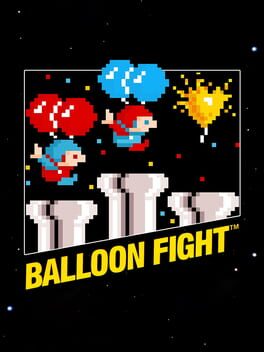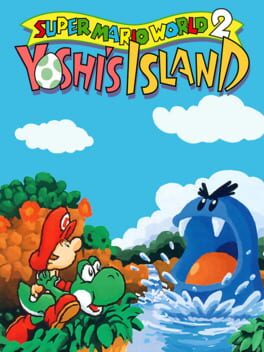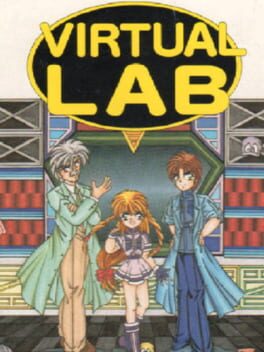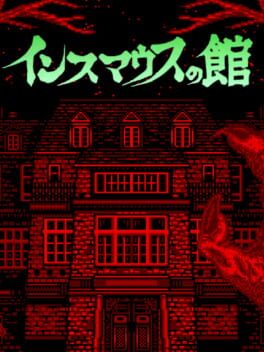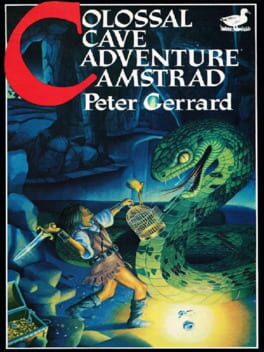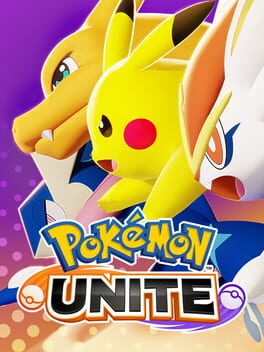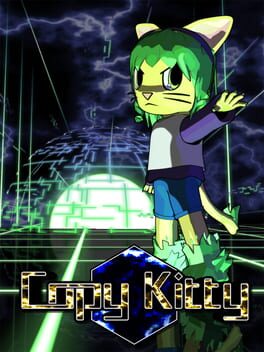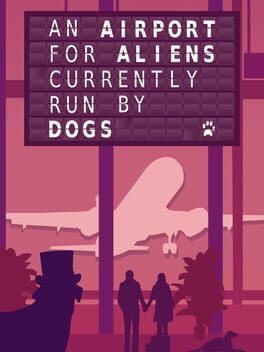vehemently
1985
2017
1994
Within the vast library of verbs afforded to players in games, "to fight" is almost unilaterally prioritized. There are no doubt exceptions (entire genres of them) but the vast majority of games, as far as I know, expect the player to enact some form of violence within it. My dad routinely asks me, "Why are so many games about killing?" I ask him, "Why are so many movies about killing?" But this is usually an evasive maneuver, because the truth is, even compared to film, video games are dripping with violence. This is not intrinsically bad, obviously, but it does often lead to a want for games that explore a less violent verbset. There are so many things we can do in the world, so why must video games always boil down to fighting?
Super Punch-Out!!, meanwhile, is only about fighting. It's not about anything else. After all, it's a boxing game. (Sports video games, coincidentally, are perhaps the most popular non-violent genre.) Most games create elaborate contrivances (also known as "stories") to justify their universe of violence. Boxing needs no justification, because it is, by definition, bouts of unjustified punching.
I'll be honest: I've never really liked sports. It's not a matter of disrespect; it's a combination of personal history and personality. Something in my psychology doesn't really line up with it. (For the record, this extends to e-sports, too. I would love to be able to grok fighting games, but grok them I do not.) I just don't seem to have a competitive bone in my body, and if I do, it's probably broken. Boxing itself can be kind of frightening to me if I think about it too much. Super Punch-Out!! is not only a boxing game, but it's also themed more like professional wrestling, a hobby which unfortunately I cannot help but have an immediate revulsion towards. Li'l Mac's opponents are a rogue's gallery of cartoonish heels themed with mish-mashed stereotypes, ranging widely in degrees of offensiveness and cultural insensitivity.
Despite all that, I love Super Punch-Out!!. Maybe it helps that it's a single player game. I had enjoyed the NES Punch-Out!! as a pre-teen, though I don't think I ever got very far. The series' combat is unique, functioning almost more like a puzzle game. King Hippo, from the NES, is perhaps the best illustration of this; you deliver a well-timed smack to his gaping gob and punch his stomach when his pants are quite literally down. I think everyone who's played these games has one or two opponents that was their own mountain to conquer. For me, they were Macho Man, a tanned body builder from Malibu, and Heike Kagero, a kabuki boxer who attacks you with his hair. (Did I mention this game is basically professional wrestling?) It took me days to take them down, Macho Man with his massive one-hit-KO spins, Kagero with his hair whipping across the screen. Every win is hard fought, and every win is a flush of accomplishment hitting your system.
Again, fighting is literally the only thing you do in this game. Many games, even the most action-heavy, frame their combat within a worldspace, full of ancillary systems. Here, there is no exterior world to explore, nowhere to escape to. There's only boxing. As a result, the boxing of Super Punch-Out!! is actually pretty mechanically dense, especially for the time. The NES version was, comparitively, a bit repetitive and a bit flat, but compared to its contemporaries, it was an incredibly complex combat system. The SNES sequel deepens this further, returning to the depth exhibited in the original arcade game. The deck is completely stacked against you. Li'l Mac is a tiny little twink (albeit ripped), and everyone towers over him. You often end up taking chips off their healthbars while a single blow across your chin will decimate you. It's even got a time limit of three minutes, which means every punch pulled is another inch closer to loss. People sometimes talk about games where "every button press counts", but it really is true here. A single mistimed button press (or even leaving buttons unpressed) by a couple of frames can be the difference between you nailing him with an uppercut, or you finding yourself facedown on the canvas.
Super Punch-Out!! makes me a little embarrassed to be so skeptical of the verb "to fight." I will never stop looking for new kinds of play, but it reveals just how dynamic combat can be, not in spite of it being a game exclusively about fighting, but because of it. The fighting game community, I imagine, is already quite aware of this, and maybe this all seems laughably quaint if you're one of those Platinum game stans, but as a reminder, this game is almost 30 years old, and in the case of the arcade game, 40 years old. Most games, even these days, do not ask for anything close to the amount of mastery and attention Super Punch-Out!! does. It's a very demanding game where every little thing matters. It matters whether you throw a right hook or a left one. Whether you block high or low. Whether you try to hit their face or their chest. Whether you dodge left or right. You have to watch every move your opponent makes. Learn every tell. Know how to precisely counter each one. Get that download complete. Study all their moves. And after you've done all that? Punch them in the face.
Super Punch-Out!!, meanwhile, is only about fighting. It's not about anything else. After all, it's a boxing game. (Sports video games, coincidentally, are perhaps the most popular non-violent genre.) Most games create elaborate contrivances (also known as "stories") to justify their universe of violence. Boxing needs no justification, because it is, by definition, bouts of unjustified punching.
I'll be honest: I've never really liked sports. It's not a matter of disrespect; it's a combination of personal history and personality. Something in my psychology doesn't really line up with it. (For the record, this extends to e-sports, too. I would love to be able to grok fighting games, but grok them I do not.) I just don't seem to have a competitive bone in my body, and if I do, it's probably broken. Boxing itself can be kind of frightening to me if I think about it too much. Super Punch-Out!! is not only a boxing game, but it's also themed more like professional wrestling, a hobby which unfortunately I cannot help but have an immediate revulsion towards. Li'l Mac's opponents are a rogue's gallery of cartoonish heels themed with mish-mashed stereotypes, ranging widely in degrees of offensiveness and cultural insensitivity.
Despite all that, I love Super Punch-Out!!. Maybe it helps that it's a single player game. I had enjoyed the NES Punch-Out!! as a pre-teen, though I don't think I ever got very far. The series' combat is unique, functioning almost more like a puzzle game. King Hippo, from the NES, is perhaps the best illustration of this; you deliver a well-timed smack to his gaping gob and punch his stomach when his pants are quite literally down. I think everyone who's played these games has one or two opponents that was their own mountain to conquer. For me, they were Macho Man, a tanned body builder from Malibu, and Heike Kagero, a kabuki boxer who attacks you with his hair. (Did I mention this game is basically professional wrestling?) It took me days to take them down, Macho Man with his massive one-hit-KO spins, Kagero with his hair whipping across the screen. Every win is hard fought, and every win is a flush of accomplishment hitting your system.
Again, fighting is literally the only thing you do in this game. Many games, even the most action-heavy, frame their combat within a worldspace, full of ancillary systems. Here, there is no exterior world to explore, nowhere to escape to. There's only boxing. As a result, the boxing of Super Punch-Out!! is actually pretty mechanically dense, especially for the time. The NES version was, comparitively, a bit repetitive and a bit flat, but compared to its contemporaries, it was an incredibly complex combat system. The SNES sequel deepens this further, returning to the depth exhibited in the original arcade game. The deck is completely stacked against you. Li'l Mac is a tiny little twink (albeit ripped), and everyone towers over him. You often end up taking chips off their healthbars while a single blow across your chin will decimate you. It's even got a time limit of three minutes, which means every punch pulled is another inch closer to loss. People sometimes talk about games where "every button press counts", but it really is true here. A single mistimed button press (or even leaving buttons unpressed) by a couple of frames can be the difference between you nailing him with an uppercut, or you finding yourself facedown on the canvas.
Super Punch-Out!! makes me a little embarrassed to be so skeptical of the verb "to fight." I will never stop looking for new kinds of play, but it reveals just how dynamic combat can be, not in spite of it being a game exclusively about fighting, but because of it. The fighting game community, I imagine, is already quite aware of this, and maybe this all seems laughably quaint if you're one of those Platinum game stans, but as a reminder, this game is almost 30 years old, and in the case of the arcade game, 40 years old. Most games, even these days, do not ask for anything close to the amount of mastery and attention Super Punch-Out!! does. It's a very demanding game where every little thing matters. It matters whether you throw a right hook or a left one. Whether you block high or low. Whether you try to hit their face or their chest. Whether you dodge left or right. You have to watch every move your opponent makes. Learn every tell. Know how to precisely counter each one. Get that download complete. Study all their moves. And after you've done all that? Punch them in the face.
2021
Metroid, in its own way, has always been a series about transformation. Early on, this was only in the most abstract sense, as Samus accumulated power-ups and the morph ball. The second entry begins to make its themes of transformation more literal with the metamorphosis of the metroids. From Super Metroid, to Fusion, to now Dread, Samus’s suit is a protean machine that constantly changes shape, color, and function. The Prime sub-series, too, deals with transformation constantly. Even if you stripped these thematic trappings away, you would still be left with a game that is fundamentally about transformation. It’s a series in which Samus (and thus, the player) constantly change, their abilities constantly expanding and shifting in scope.
So perhaps it’s fitting that Metroid went through its own dramatic transformation over the years.
Metroid Dread was pretty universally considered vaporware until recently. All that was really publicly known about it was that it existed at one point. Now, we know a bit more: it was originally planned for the DS, but the team felt they couldn’t create the game with the technology at the time. And so, Metroid Dread lay in its tomb for nearly two decades, like a dormant torizo, until Mercury Steam, the team behind Samus Returns, came into the picture. That this game even came out is shocking. But here it is, somehow.
Here is my question: where is all the dread in Metroid Dread?
It can be easy to forget, now that we live during a golden age of Metroidvanias, that the Metroid series was pretty radical at the time of its inception. It was a strange hybrid of platformer and exploration that wasn’t really seen before. Super Metroid might seem trite or quaint now that it is recognized as a blueprint for the genre, but it was (and in many ways still is) deeply ambitious. Decades later, select elements of those games’ design were absorbed into the cultural landscape, improved upon, experimented with, and modified. Metroid Dread reflects these changes by adapting to them, but the result is something that feels fundamentally different from its origins.
That isn’t a criticism. If Metroid has taught us anything, it’s that sometimes change can be good. Dread is a slick, visually stunning package, informed by well over a decade of iteration and innovation, designed with precision and intention, never letting you lose forward momentum for a second. Dread is a sublime action game that represents a peak in the 2D series’ combat. It all feels dynamic and sharp in a way fighting as Samus has never felt like before. In the early days, though, Metroid wasn’t really ever a game about combat.
Metroid Dread is an action game. Early games were games with action in them. Maybe that seems like an awfully fine distinction, but it represents a long lasting shift in a design ethos. This isn’t new, either; the series has consistently drifted closer towards action. Prime also showed this change, as the third entry, Corruption, was a far more linear action title than the first venture into 3D. Zero Mission perhaps exemplifies this the most clearly, as a remake of the original NES title that was far more action heavy and far more directed. The NES game was awkward and janky. Even in the ever-venerated Super Metroid, Samus can feel unwieldy and floaty. This would typically be seen as bad, but it also lends itself to a feeling of spaciness, weirdness, and unwelcomeness that fit the games well.
With the release of Dread, we’ve seen more and more newcomers come to the series, and this is perhaps the perfect entry point for many players. (Speedruns of this game are going to be beautiful.) The game is loaded with affordances and quality-of-life improvements. The whole game is designed to be an almost frictionless exploration experience. While past entries’ attempts to become more approachable had previously been fraught, Dread feels elegant and beautiful in its execution. Zero Mission and particularly Fusion were controversial because their sense of direction felt like hand-holding. Exploration was explicitly guided, and it was overbearing. (Personally, I think this could have been fixed by just providing the option to ask for hints, rather than forcing them onto the player.) Dread has no need for wordy signage, as it’s designed to guide the player silently and subtly through its world, rarely needing to instruct. Following along the critical path is a blissful glide through ZDR. There’s always a ragged edge, another door to open, another room to explore. It’s deeply satisfying and engrossing. Many of Dread’s optional upgrades are also puzzle-like, requiring strategic movement and platforming. This is a far cry from the old days when secrets were often hidden in random blocks with what seemed to be no real care.
Early on, Metroid wasn’t really about a frictionless experience, though. It was often just about getting lost. The original Metroid is filled with friction, with labyrinthine and repetitive corridors and dead ends. Metroid 2, on the other hand, pivoted hard into linearity, while Super established a more concrete formula. In it’s finest moments, Metroid was often about exploring without direction, beating on with uncertainty as the intrepid bounty hunter Samus. They were scary, weird, often incoherent games. For many, this makes the games altogether unapproachable, but it also conjured an enchanting mysteriousness that still affects me to this day.
Of note is also the series' gradual emphasis on plot. This climaxed in the near-universally maligned Other M, but Metroid had been showing more of its story for years, with dialogue and lore. (Yes, I read the manga, too, don’t @ me.) Dread has a veritable plot, with plot twists and worldbuilding and an antagonist with motives. It’s apparently the end of the so-called Metroid arc, and how it goes about wrapping that up is interesting indeed. Meanwhile, Super Metroid was a masterpiece of wordless narrative, telling a story about very little, but filling it with contemplation and moodiness. (Prime did this well too, while also featuring robust lore in its scan logs.) It didn’t really have characters, and the writing essentially boiled down to an opening monologue. The rest was told by the shape of space and its inhabitants. They were tone pieces, at least for a moment, ever brief. The series has shied away from silent storytelling, despite always being capable of it when it wants to be, and supplements with big dialogue boxes.
The truth is there is very little dreadful in Metroid Dread. After all, it’s designed to be an empowering and engaging experience, not an off putting one. There is plenty to be seen that is horrific or intense, but there is not much dread, no oppressive weight hovering over your shoulders as you stride into the dark. Even the E.M.M.I, the poster child of Dread, which upon encountering can be heart-pumping and tense, do not feel dreadful. They can instant-kill you and are unkillable (at first), but this design choice means that the generous checkpoint system implemented here was more or less necessary. As a result, the E.M.M.I become more like puzzles, and less like looming threats they seem to be. All of the game’s challenges can be overcome. The game is designed for you to overcome it. Metroid Dread is actually quite welcoming, inviting players both new and old into ZDR to romp through its caverns.
This is, by all accounts, to be recognized as good design. All these affordances, from improved game feel to improved world design, are what is considered in most circles to be good design. And I agree. Metroid Dread is impeccably well made. It is the current apex in years of iteration. Cruising through an alien landscape as Samus Aran has never felt so good. But it’s important to recognize that all these improvements end up changing the character of the series significantly. It’s still Metroid, don’t get me wrong. Dread is bursting at the seams with series staples. But it has also taken on a very different tone. It has fundamentally different design goals. The series is allowed to change. It doesn’t need to be ambitious and weird anymore, and in many ways, it can't be. It’s allowed to just be a great game. And Metroid Dread is not only a great game, but also one of the best in the series. After years and years of waiting, Metroid Dread finally emerged from its cocoon, and while it is fundamentally different, it really is stunning.
But I can’t lie. A part of me longs for the mystery and unease of the past, a past that perhaps barely existed at all. When Metroid was an eerie tone piece haunted by uncertainty and melancholy. When it was a world filled with dread.
So perhaps it’s fitting that Metroid went through its own dramatic transformation over the years.
Metroid Dread was pretty universally considered vaporware until recently. All that was really publicly known about it was that it existed at one point. Now, we know a bit more: it was originally planned for the DS, but the team felt they couldn’t create the game with the technology at the time. And so, Metroid Dread lay in its tomb for nearly two decades, like a dormant torizo, until Mercury Steam, the team behind Samus Returns, came into the picture. That this game even came out is shocking. But here it is, somehow.
Here is my question: where is all the dread in Metroid Dread?
It can be easy to forget, now that we live during a golden age of Metroidvanias, that the Metroid series was pretty radical at the time of its inception. It was a strange hybrid of platformer and exploration that wasn’t really seen before. Super Metroid might seem trite or quaint now that it is recognized as a blueprint for the genre, but it was (and in many ways still is) deeply ambitious. Decades later, select elements of those games’ design were absorbed into the cultural landscape, improved upon, experimented with, and modified. Metroid Dread reflects these changes by adapting to them, but the result is something that feels fundamentally different from its origins.
That isn’t a criticism. If Metroid has taught us anything, it’s that sometimes change can be good. Dread is a slick, visually stunning package, informed by well over a decade of iteration and innovation, designed with precision and intention, never letting you lose forward momentum for a second. Dread is a sublime action game that represents a peak in the 2D series’ combat. It all feels dynamic and sharp in a way fighting as Samus has never felt like before. In the early days, though, Metroid wasn’t really ever a game about combat.
Metroid Dread is an action game. Early games were games with action in them. Maybe that seems like an awfully fine distinction, but it represents a long lasting shift in a design ethos. This isn’t new, either; the series has consistently drifted closer towards action. Prime also showed this change, as the third entry, Corruption, was a far more linear action title than the first venture into 3D. Zero Mission perhaps exemplifies this the most clearly, as a remake of the original NES title that was far more action heavy and far more directed. The NES game was awkward and janky. Even in the ever-venerated Super Metroid, Samus can feel unwieldy and floaty. This would typically be seen as bad, but it also lends itself to a feeling of spaciness, weirdness, and unwelcomeness that fit the games well.
With the release of Dread, we’ve seen more and more newcomers come to the series, and this is perhaps the perfect entry point for many players. (Speedruns of this game are going to be beautiful.) The game is loaded with affordances and quality-of-life improvements. The whole game is designed to be an almost frictionless exploration experience. While past entries’ attempts to become more approachable had previously been fraught, Dread feels elegant and beautiful in its execution. Zero Mission and particularly Fusion were controversial because their sense of direction felt like hand-holding. Exploration was explicitly guided, and it was overbearing. (Personally, I think this could have been fixed by just providing the option to ask for hints, rather than forcing them onto the player.) Dread has no need for wordy signage, as it’s designed to guide the player silently and subtly through its world, rarely needing to instruct. Following along the critical path is a blissful glide through ZDR. There’s always a ragged edge, another door to open, another room to explore. It’s deeply satisfying and engrossing. Many of Dread’s optional upgrades are also puzzle-like, requiring strategic movement and platforming. This is a far cry from the old days when secrets were often hidden in random blocks with what seemed to be no real care.
Early on, Metroid wasn’t really about a frictionless experience, though. It was often just about getting lost. The original Metroid is filled with friction, with labyrinthine and repetitive corridors and dead ends. Metroid 2, on the other hand, pivoted hard into linearity, while Super established a more concrete formula. In it’s finest moments, Metroid was often about exploring without direction, beating on with uncertainty as the intrepid bounty hunter Samus. They were scary, weird, often incoherent games. For many, this makes the games altogether unapproachable, but it also conjured an enchanting mysteriousness that still affects me to this day.
Of note is also the series' gradual emphasis on plot. This climaxed in the near-universally maligned Other M, but Metroid had been showing more of its story for years, with dialogue and lore. (Yes, I read the manga, too, don’t @ me.) Dread has a veritable plot, with plot twists and worldbuilding and an antagonist with motives. It’s apparently the end of the so-called Metroid arc, and how it goes about wrapping that up is interesting indeed. Meanwhile, Super Metroid was a masterpiece of wordless narrative, telling a story about very little, but filling it with contemplation and moodiness. (Prime did this well too, while also featuring robust lore in its scan logs.) It didn’t really have characters, and the writing essentially boiled down to an opening monologue. The rest was told by the shape of space and its inhabitants. They were tone pieces, at least for a moment, ever brief. The series has shied away from silent storytelling, despite always being capable of it when it wants to be, and supplements with big dialogue boxes.
The truth is there is very little dreadful in Metroid Dread. After all, it’s designed to be an empowering and engaging experience, not an off putting one. There is plenty to be seen that is horrific or intense, but there is not much dread, no oppressive weight hovering over your shoulders as you stride into the dark. Even the E.M.M.I, the poster child of Dread, which upon encountering can be heart-pumping and tense, do not feel dreadful. They can instant-kill you and are unkillable (at first), but this design choice means that the generous checkpoint system implemented here was more or less necessary. As a result, the E.M.M.I become more like puzzles, and less like looming threats they seem to be. All of the game’s challenges can be overcome. The game is designed for you to overcome it. Metroid Dread is actually quite welcoming, inviting players both new and old into ZDR to romp through its caverns.
This is, by all accounts, to be recognized as good design. All these affordances, from improved game feel to improved world design, are what is considered in most circles to be good design. And I agree. Metroid Dread is impeccably well made. It is the current apex in years of iteration. Cruising through an alien landscape as Samus Aran has never felt so good. But it’s important to recognize that all these improvements end up changing the character of the series significantly. It’s still Metroid, don’t get me wrong. Dread is bursting at the seams with series staples. But it has also taken on a very different tone. It has fundamentally different design goals. The series is allowed to change. It doesn’t need to be ambitious and weird anymore, and in many ways, it can't be. It’s allowed to just be a great game. And Metroid Dread is not only a great game, but also one of the best in the series. After years and years of waiting, Metroid Dread finally emerged from its cocoon, and while it is fundamentally different, it really is stunning.
But I can’t lie. A part of me longs for the mystery and unease of the past, a past that perhaps barely existed at all. When Metroid was an eerie tone piece haunted by uncertainty and melancholy. When it was a world filled with dread.
2020
Tender Frog House, a game which is described by its creator as "a forum post of a game", is cynical. It's not that it's technically wrong about many of its comments on wholesome games. In fact, its response to wholesome games which view themselves as a unique political statement are incisive in their own way. These aren't wholly original ideas, but they are conveyed with a precision and a bite that calls attention. And they have truth to them. Certainly, being cozy is not a radical act. Those who make this claim are fooling themselves. But Tender Frog House comes off as taking a very broad swing against not just a particular subset of wholesome game creators, but about twee art, and eventually the purpose art itself. And this is where the incisive critique turns into a cynical rat's nest.
Tender Frog House pre-empts my response by refuting the notion that this perspective is cynical, that this is simply a knee-jerk response that defends a conservative mindset. Well, guess what? It is cynical. But it's not cynical for the sake of its perspectives on wholesome games, but rather, its perspective on their ethos. Tender Frog House more or less explicitly states that those who create so-called "wholesome games" are in fact engaging in what amounts to a deeply conservative pastiche which only serves to perpetuate a fascist capitalist society. Further, those who find joy or pleasure in this art or view it as a means of expressing themselves are in fact experiencing a false consciousness which only furthers that fascist capitalist society.
This is an exemplar of cynicism: calling people phony. I refuse this. I refuse to adopt a worldview where people who find and make art that makes them happy is fascist. Tender Frog House seems to find no room for this; either your art is revolutionary praxis, or its reactionary propaganda. Could it simply not be that people make games about cute frogs because it makes them happy? Is that not enough? Why must art only serve the purpose of political action? Art serves many purposes, and just because it performs either an ineffective or maybe even ever-so-slight counteraction does not mean it is not ultimately worthy of being enjoyed. Art acts on us in innumerable ways, in the mind and the body. Not all of these experiences are worth politicizing. That which is anodyne may not cure anything, but that doesn't mean it won't pair well with some wine. As I stated, I think the notion that coziness, sincerity, and self-care are in-and-of-themselves radical is false. But that doesn't mean they aren't worth having.
Moreover, I haven't found supposedly more revolutionary "serious games" to be effective on that front, either. Tender Frog House certainly doesn't inspire me, either as an artist or as a political actor. Maybe I am projecting, but it seems it instructs me to adopt a realpolitik of aesthetics, where I may only offer affordances to or create that which is unequivocally revolutionary. Well, personally? I have found little of that art enjoyable. I have played the Molle Industria games, and others. These games do not invite any transformative thought, and they are incredibly didactic (and frankly, not particularly persuasive). I don't think art is a particularly effective form of praxis, whether it's cozy or cynical. I'm not convinced any of these serious games bring us any closer to a better society than a cute game about frogs.
Let's stop pretending art is a uniquely precious vector for political action. I doubt that line of thinking leads anywhere. But who knows. There is a reason Adorno hated jazz. I think time has proven him wrong. We'll just have to wait for time to pass to see about Tender Frog House.
Tender Frog House pre-empts my response by refuting the notion that this perspective is cynical, that this is simply a knee-jerk response that defends a conservative mindset. Well, guess what? It is cynical. But it's not cynical for the sake of its perspectives on wholesome games, but rather, its perspective on their ethos. Tender Frog House more or less explicitly states that those who create so-called "wholesome games" are in fact engaging in what amounts to a deeply conservative pastiche which only serves to perpetuate a fascist capitalist society. Further, those who find joy or pleasure in this art or view it as a means of expressing themselves are in fact experiencing a false consciousness which only furthers that fascist capitalist society.
This is an exemplar of cynicism: calling people phony. I refuse this. I refuse to adopt a worldview where people who find and make art that makes them happy is fascist. Tender Frog House seems to find no room for this; either your art is revolutionary praxis, or its reactionary propaganda. Could it simply not be that people make games about cute frogs because it makes them happy? Is that not enough? Why must art only serve the purpose of political action? Art serves many purposes, and just because it performs either an ineffective or maybe even ever-so-slight counteraction does not mean it is not ultimately worthy of being enjoyed. Art acts on us in innumerable ways, in the mind and the body. Not all of these experiences are worth politicizing. That which is anodyne may not cure anything, but that doesn't mean it won't pair well with some wine. As I stated, I think the notion that coziness, sincerity, and self-care are in-and-of-themselves radical is false. But that doesn't mean they aren't worth having.
Moreover, I haven't found supposedly more revolutionary "serious games" to be effective on that front, either. Tender Frog House certainly doesn't inspire me, either as an artist or as a political actor. Maybe I am projecting, but it seems it instructs me to adopt a realpolitik of aesthetics, where I may only offer affordances to or create that which is unequivocally revolutionary. Well, personally? I have found little of that art enjoyable. I have played the Molle Industria games, and others. These games do not invite any transformative thought, and they are incredibly didactic (and frankly, not particularly persuasive). I don't think art is a particularly effective form of praxis, whether it's cozy or cynical. I'm not convinced any of these serious games bring us any closer to a better society than a cute game about frogs.
Let's stop pretending art is a uniquely precious vector for political action. I doubt that line of thinking leads anywhere. But who knows. There is a reason Adorno hated jazz. I think time has proven him wrong. We'll just have to wait for time to pass to see about Tender Frog House.
1995
1995
Survival Horror, as a genre, often feels hard to pin down due to its particular origins in adventure games. The prototype tends to be one of attrition and riddles, a game about navigating a maze of monsters while solving puzzles and unlocking doors. But what if you reduced that down, boiled it down like syrup into its absolute most basic form? I think different people will have different ideas of what that syrup would taste like. But it might taste something like Innsmouth no Yakata (Mansion of Innsmouth).
The game consists of running around corridors, searching for keys and map orbs, and shooting Lovecraftian beasties that get in your way. Your ammunition is limited, so you also scour for bullets, as well as health pick-ups. It's almost like a dungeon crawl. But here's the kicker: there's a time limit. A short one, too! You never get more than like, 3 minutes to complete a level. Unlike most Survival Horror, which are slow trudges through corridors of dread, playing through Innsmouth no Yakata is a frantic, desperate sprint through a haunted house.
In a way, Innsmouth no Yakata is almost a precursor to the cult classic Killer7, Grasshopper's own radical reinterpretation of Survival Horror. It's a unique experience, and I'm curious what it would feel like in the Virtual Boy headset.
Now, does all this singularity make Innsmouth no Yakata a good game? Not really. It's too barebones and too repetitive to be much more than an a diversion. And I bet there are other games that have figured this style out better. But it's an interesting piece within the lineage of Survival Horror, showcasing a unique take on just what this genre can be capable of doing, all while draped in that eerie VB red monochrome.
The game consists of running around corridors, searching for keys and map orbs, and shooting Lovecraftian beasties that get in your way. Your ammunition is limited, so you also scour for bullets, as well as health pick-ups. It's almost like a dungeon crawl. But here's the kicker: there's a time limit. A short one, too! You never get more than like, 3 minutes to complete a level. Unlike most Survival Horror, which are slow trudges through corridors of dread, playing through Innsmouth no Yakata is a frantic, desperate sprint through a haunted house.
In a way, Innsmouth no Yakata is almost a precursor to the cult classic Killer7, Grasshopper's own radical reinterpretation of Survival Horror. It's a unique experience, and I'm curious what it would feel like in the Virtual Boy headset.
Now, does all this singularity make Innsmouth no Yakata a good game? Not really. It's too barebones and too repetitive to be much more than an a diversion. And I bet there are other games that have figured this style out better. But it's an interesting piece within the lineage of Survival Horror, showcasing a unique take on just what this genre can be capable of doing, all while draped in that eerie VB red monochrome.
What makes Colossal Cave Adventure interesting to this day is its own limitations. It's a rickety little game, accepting few inputs as valid. It's often frustrating to convince the game to do what you want it to do. And in being a game entirely in text, the labyrinthine geometry of the caves can be incredibly difficult to envision.
But it is because of these limitations, not in spite of them, that the game is able to capture your imagination. The arcane black box of its outputs makes you constantly wonder just what is possible in the world of this game. The ever-perplexing caves seem fantastical and sometimes impossible, wandering blindly through a maze that seems to elude your understanding. The things that produce these feelings are limitations, and by modern standards would be considered failures. And I can't say I had a lot of fun playing Colossal Cave Adventure. But these feelings are palpable and memorable, and represent a potency in text adventures that makes me want to keep exploring.
Colossal Cave Adventure's own limitations create a vast negative space in which players can fill with imagination and mystery. That's a kind of magic that we should harness more in games.
But it is because of these limitations, not in spite of them, that the game is able to capture your imagination. The arcane black box of its outputs makes you constantly wonder just what is possible in the world of this game. The ever-perplexing caves seem fantastical and sometimes impossible, wandering blindly through a maze that seems to elude your understanding. The things that produce these feelings are limitations, and by modern standards would be considered failures. And I can't say I had a lot of fun playing Colossal Cave Adventure. But these feelings are palpable and memorable, and represent a potency in text adventures that makes me want to keep exploring.
Colossal Cave Adventure's own limitations create a vast negative space in which players can fill with imagination and mystery. That's a kind of magic that we should harness more in games.
2019
It's fine, it's just... missing something. Worth playing if you like this style of game! Its aesthetics are impeccable, but its mechanics just aren't quite fleshed out enough. Its somewhat unique style of arcade puzzle feels more like constantly trying to untangle a knot. It's interesting, but I think the game mechanics needed more time in the oven. Just a few more tricks would have gone a long way, I feel. Its style alone is a feat, but it's not a feat that kept me hooked.
2021
1982
I feel within myself often the compulsion to rate and rank things. That’s why I typically rate the games I’ve played. I attempt to rationalize and standardize these ratings, but really, they’re a failed attempt to condense the whole of my experience into a single number. It’s a fraught process, but I am compelled to do it anyway.
Why do I say all this?
Custer’s Revenge is the worst game I’ve ever played.
In trying to rationalize my ratings, I ask what makes something worthy of the best, and eventually, what’s worthy of the worst. It ultimately comes down to instinct. What makes something good or bad is mostly an attempt to generate a post hoc understanding of my own experience. I have ideas about what all these numbers mean, and doing so means I have to also consider what it means to be worthy of being called the worst.
And nothing is more deserving of the label “the worst” than this.
When most games are “bad”, its because they’re buggy, or messy, or ugly. It is an assessment based on very concrete qualities, treating it more like software. But we’ve got to recognize that there are oh so many ways for a game to be “bad”. Because they’re not just programs, they’re also arrays of artistic expression. In my view, the one way that we can truly assess whether something is “bad” is whether or not it is harmful. And there is no question in my mind that Custer’s Revenge is harmful.
I played Custer’s Revenge for maybe about a minute. It was probably not any more than sixty seconds. I regret every single one of those seconds. I feel ashamed to have played this juvenile, racist, misogynistic trash. Every inch of it is repugnant. Wasting even a fraction of a second on this game makes me a worse person. There are few pieces of art that can invoke within me such self-loathing. I literally felt ill, a turning in my stomach, a flush of shame at what I had done. What I had done? Touch this vile game.
It’s a bad video game, too. Even without its abhorrent subject matter, its gameplay is repetitive, droll, and uninteresting. Avoiding repetitive patterns of arrows and then rapidly pressing the button. That’s all there is to it. This isn’t a matter of it aging poorly, either. There are masterpieces of early game design from this era. Critics at the time hated it, too. It’s not bad because it’s old; it’s bad because it’s bad. There really is no redeeming quality in the slightest.
Even its name is an offense. Imagine taking the rape of an indigenous woman by General Custer, a man who has since become a symbol of the violent colonization of the Western US in the 19th century, and, as such, was once described by Vine Deloria Jr. as “the Adolph Eichmann of the plains”, and then framing that rape as “revenge”.
The developers claim that it was all in good fun, no offense intended, that they only seek to make entertain. Well, I’m not entertained. I’m not laughing. I’m not smiling. I’m not having a good time. And I have very pointed questions for anyone who is.
Custer’s Revenge is, in its totality, fully deserving of being considered one of the worst games ever made. It has earned every single word of spurn volleyed into its back. Just thinking about what it is, the fact that anyone would put time and effort into making this, makes me angry and disappointed. It is a cruel, racist, misogynistic, and juvenile game. Its mere existence gives pornography a bad name. If only they had taken this abomination and buried it in New Mexico instead.
Why do I say all this?
Custer’s Revenge is the worst game I’ve ever played.
In trying to rationalize my ratings, I ask what makes something worthy of the best, and eventually, what’s worthy of the worst. It ultimately comes down to instinct. What makes something good or bad is mostly an attempt to generate a post hoc understanding of my own experience. I have ideas about what all these numbers mean, and doing so means I have to also consider what it means to be worthy of being called the worst.
And nothing is more deserving of the label “the worst” than this.
When most games are “bad”, its because they’re buggy, or messy, or ugly. It is an assessment based on very concrete qualities, treating it more like software. But we’ve got to recognize that there are oh so many ways for a game to be “bad”. Because they’re not just programs, they’re also arrays of artistic expression. In my view, the one way that we can truly assess whether something is “bad” is whether or not it is harmful. And there is no question in my mind that Custer’s Revenge is harmful.
I played Custer’s Revenge for maybe about a minute. It was probably not any more than sixty seconds. I regret every single one of those seconds. I feel ashamed to have played this juvenile, racist, misogynistic trash. Every inch of it is repugnant. Wasting even a fraction of a second on this game makes me a worse person. There are few pieces of art that can invoke within me such self-loathing. I literally felt ill, a turning in my stomach, a flush of shame at what I had done. What I had done? Touch this vile game.
It’s a bad video game, too. Even without its abhorrent subject matter, its gameplay is repetitive, droll, and uninteresting. Avoiding repetitive patterns of arrows and then rapidly pressing the button. That’s all there is to it. This isn’t a matter of it aging poorly, either. There are masterpieces of early game design from this era. Critics at the time hated it, too. It’s not bad because it’s old; it’s bad because it’s bad. There really is no redeeming quality in the slightest.
Even its name is an offense. Imagine taking the rape of an indigenous woman by General Custer, a man who has since become a symbol of the violent colonization of the Western US in the 19th century, and, as such, was once described by Vine Deloria Jr. as “the Adolph Eichmann of the plains”, and then framing that rape as “revenge”.
The developers claim that it was all in good fun, no offense intended, that they only seek to make entertain. Well, I’m not entertained. I’m not laughing. I’m not smiling. I’m not having a good time. And I have very pointed questions for anyone who is.
Custer’s Revenge is, in its totality, fully deserving of being considered one of the worst games ever made. It has earned every single word of spurn volleyed into its back. Just thinking about what it is, the fact that anyone would put time and effort into making this, makes me angry and disappointed. It is a cruel, racist, misogynistic, and juvenile game. Its mere existence gives pornography a bad name. If only they had taken this abomination and buried it in New Mexico instead.
2020
2016
Let me give you the elevator pitch on what might be the best action game of its decade: "What if Kirby played like Bangai-O?"
Copy Kitty rules. It whips, it melts, it owns, it slaps. Any butt-kicking verb capable of being performed, Copy Kitty performs it. I say it might be the best action games of the decade, and I mean it. Because while I might like other games with action more, Copy Kitty is pure action. It is action with a raw, molten core, full of dynamic challenges and massive explosions. It's art-style and lore are completely silly, but are genuine and charming. It also has a level editor and an endless mode and a completely seperate and radically different second playable character and??? It's just so damn good. If you love action games, do yourself a favor and check Copy Kitty out.
Copy Kitty rules. It whips, it melts, it owns, it slaps. Any butt-kicking verb capable of being performed, Copy Kitty performs it. I say it might be the best action games of the decade, and I mean it. Because while I might like other games with action more, Copy Kitty is pure action. It is action with a raw, molten core, full of dynamic challenges and massive explosions. It's art-style and lore are completely silly, but are genuine and charming. It also has a level editor and an endless mode and a completely seperate and radically different second playable character and??? It's just so damn good. If you love action games, do yourself a favor and check Copy Kitty out.
I could provide a rationalization of the Dog Airport game, argue how this game is a unique and interesting portrayal of air travel, how tender and subtle its apocalyptic romance is, or even offer some unique philosophical analysis of the game, to explain why I love it so much.
But the truth is? It just makes me smile.
Utterly delightful and charming. Constantly smiling and laughing throughout the whole game. Some of the best game writing I've seen in years.
But the truth is? It just makes me smile.
Utterly delightful and charming. Constantly smiling and laughing throughout the whole game. Some of the best game writing I've seen in years.
